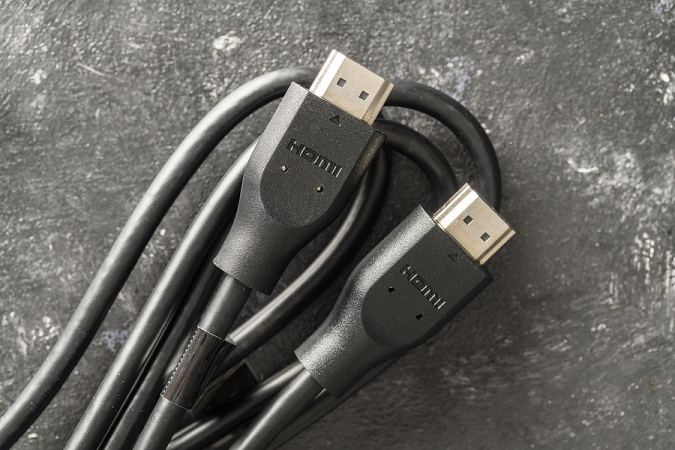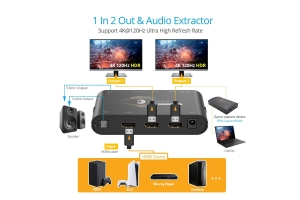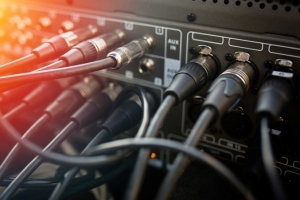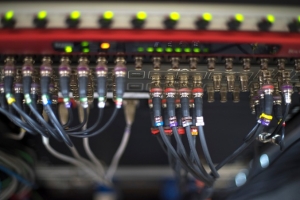We use cookies to make your experience better. To comply with the new e-Privacy directive, we need to ask for your consent to set the cookies. Learn more.
Your Go-To Guide to Essential A/V Cables

As much as we like to pride ourselves on being a wireless generation, there’s no denying our everyday lives are still bound together by essential wires and cables. In the world of A/V technology, no virtual presentations, global conference calls, or live digital broadcasts would be possible without the involvement of high-performance A/V cables.
Audio-visual (A/V) cables are an indispensable part of modern media technology. From connecting home entertainment systems to broadcasting devices in professional settings, these cables provide a reliable pathway for video and audio signals to travel.
Knowing which type of cable best suits your device can be the difference between a high-quality digital media experience or one filled with static and glitches.
The need for reliable, high-performance AV cables is only increasing as we move forward into the 21st Century. Research shows that the global market for A/V cables for residential market size is projected to reach $502.1 million by 2026 after being valued at $273.0 million in 2018.
While it’s easy to understand the importance of A/V cables, the fact remains that most people in the workplace still don’t correctly understand which type of A/V cable works best for which kind of AV function or experience.
To ensure your commercial AV equipment is working at its best, let’s break down some of the most utilized A/V cables worldwide and define their usage, so next time the video wall stops working in the boardroom, you’ll be prepared!
Composite A/V Cables
Composite A/V cable is one of the most commonly used and universally recognized AV cables. Do you remember trying to hook up a VCR or old video game counsel to the back of your parent’s television set? A composite A/V cable, otherwise known as an RCA cable, is that classic cord featuring white, yellow, and red cable ports.
Composite A/V cables have three RCA connectors – two for video and one for audio – that transmit analog signals from a single source to a television or monitor. The low cost and ease of use make it ideal for connecting older gaming consoles and DVD players to TVs and broadcasting camcorders or VCRs.
S-Video A/V Cables
An alternative to the Composite AV Cable is the S-Video A/V cable. This cable has a four-pin mini-DIN connector, which separates the video signal into two distinct components – luminance and chrominance – for improved image quality.
Since it supports higher resolution than composite cables, it’s often used to connect older gaming consoles and DVD players with newer TVs or monitors.
Coaxial A/V Cables
Coaxial A/V cables are also widely available and provide an even better connection than composite or s-video cables. These cables have one RCA connector that digitally transmits audio and video signals, minimizing interference from outside sources.
Coaxial A/V cables are ideal for high-definition broadcasts and connecting laptops and other digital devices with larger screens.
VGA/DVI A/V Cables
VGA/DVI A/V Cables are another popular choice, especially when connecting computers to monitors or projectors. These cables have 15-pin connectors that transmit analog video signals, providing sharper image resolution than composite or s-video cables.
They’re also often used for presentations in corporate settings and educational institutions, making these cables an essential audio accessory for any learning environment.
HDMI Cables
Finally, the HDMI A/V cable is a single cable solution that can carry audio and video signals in digital format between two devices. HDMI cables are often purchased in long-distance formats, providing uncompressed HDMI signal transmissions at 4K@60Hz, without compromising any picture or audio quality.
HDMI cables are ideal for modern gaming consoles and Blu-ray players and for connecting PCs to external displays like televisions and projectors.
Trust GoFanco for All Your A/V Cable Needs!
Understanding the different types of A/V cables can help ensure your media experience is superior. Whether for home entertainment systems or professional broadcasts, selecting the suitable cable can make all the difference.
At GoFanco, we always know which type of A/V cable you need to use that will allow you to get the best out of your devices and enjoy digital media precisely as it should be – crystal clear, with no static or interference.
Need help with your next purchase of A/V equipment? Contact GoFanco today and consult with our team of audio-visual specialists!








